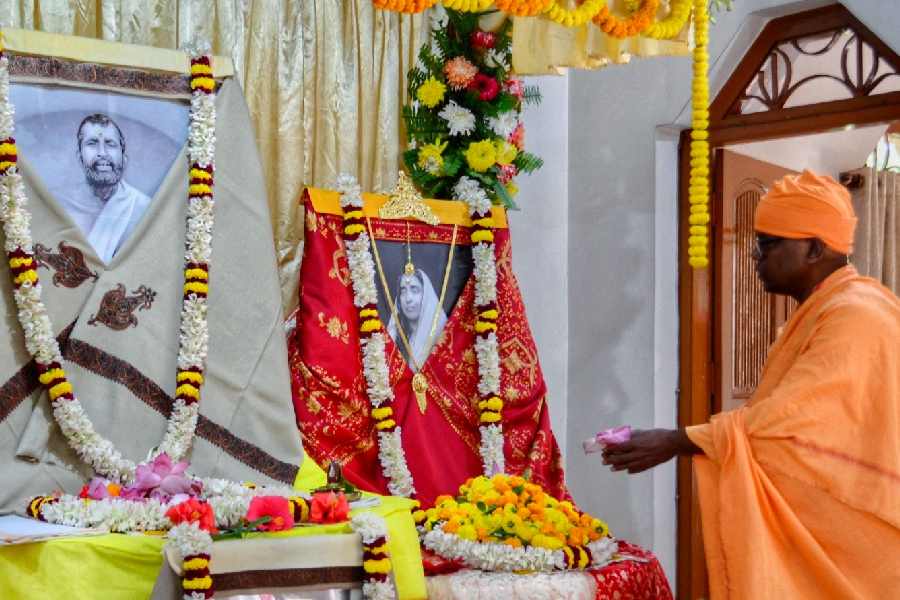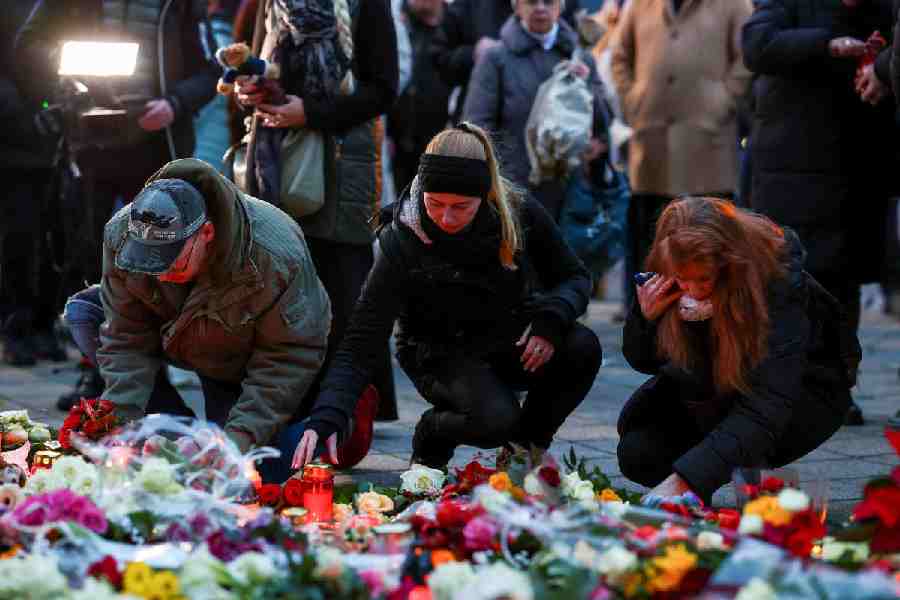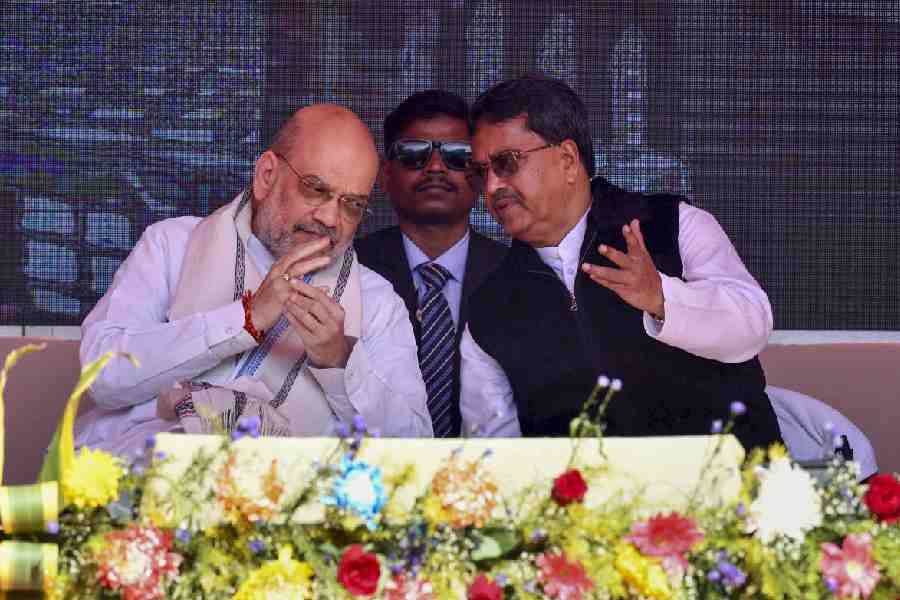 Monday, 23 December 2024
Monday, 23 December 2024
 Monday, 23 December 2024
Monday, 23 December 2024
Bangladesh’s ruling Awami League’s call for a nationwide protest wearing black badges as Tuesday was observed as national mourning day over the recent violence in the country was met with red splashed all across by a section of the students protesting against the now scrapped quota in government jobs.
“Bangladesh is observing national mourning today in memory of the murdered victims in clashes during the Quota Reform Movement. As many as 150 people were killed in the conflict and violence surrounding the movement. To mark the day, black badges are being worn, and special prayers are being organised in all mosques, temples, churches and pagodas across the country,” wrote the Bangladesh ruling party on its X (formerly Twitter) handle.
On Sunday, the Bangladesh home minister Asaduzzaman Khan had confirmed at least 147 deaths in the recent violence over the government job quota caught in a legal web.
Red marks protest in Bangladesh
“This red colour of today is the colour of our conscience and black is the colour of middlemen,” wrote Adnan Abir, a Dhaka-resident and student, wrote on his Facebook on Tuesday.
Across Bangladesh many teachers, students and others covered their faces and eyes and gagged their mouths with a red piece of cloth, the images of which were shared widely on social media and groups on Facebook that have opened recently to express solidarity with the protesting students.
Around 200 teachers at the Rajshahi University held a rally to express solidarity with the students.
“This mourning day is nothing but a conspiracy to cover up the mass murder carried out by this government,” said Mohammad Mahin, a student of Dhaka University. “What the government did was genocide. Why did they refuse to give the number of people killed and injured? Why were the hospitals, private and government, not allowed to provide the list of victims?”
Hashtags like RedForJustice, StudentsInRed, RedForVictims, StandAgainstInhumanity, StandRedForStudents, RedAgainstInjustice, BloodOnTheirHands, RedAgainstOppression, StudentsDeserveJustice and JulyMassacre were used throughout the day on social media.
According to Bangladeshi media, teachers at Dhaka University like Asif Nazrul, Kamrul Hasan, Samina Lutfa, Rushad Faridi, Kajli Sehreen Islam, Saiful Alam Chowdhury. Daffodil International University’s Jameel Khan, writers Zakir Talukdar, Chanchal Ashraf, Mahboob Morshed, Salahuddin Subhra and others have splashed the colour red on their social media profiles.
The Bangladesh government and the Awami League have blamed the opposition BNP and Jamaat alliance for the violence.
Amnesty slams Bangladesh govt
Independent organisations like Amnesty International have blamed Bangladesh prime minister Sheikh Hasina’s Awami League government for the violence.
“There is overwhelming evidence that the protesters in Bangladesh were exercising a human right to protest. There is overwhelming evidence that the use of lethal and sometimes less lethal but still severe force has been used unlawfully by security forces in Bangladesh,” Sacha Deshmukh, the CEO of Amnesty’s UK chapter said at a meeting on Monday evening.
A report released by Amnesty International last week, after what the global rights body called verification and analysis of video evidence, had ruled the situation in the South Asian country as grim.
“The egregious human rights records of the Bangladeshi government and the Rapid Action Battalion, which has been deployed to police the protests, provides little reassurance that the protesters’ rights will be protected in the absence of active international monitoring with internet and communication restrictions still partially in place,” Deprose Muchena, Amnesty International’s senior director, had said last week.
The organisation cited the example of a protester Shykh Aashhabul Yamin, a student of the Military Institute of Science and Technology, three videos of whom were analysed by Amnesty’s evidence lab.
The first video showed an unconscious Yamin on top of an armoured personnel carrier being driven along Dhaka-Aricha highway. In the second video, an officer is seen lifting Yamin by the arms while another grabs his legs and drops him off the vehicle.
In the final video, two more officers step out of the vehicle and toss his body on the other side of the road.
According to the Amnesty report, none of the 12 officers seen in the video had offered any medical aid to the student who succumbed to his injuries later on July 18.
According to an independent forensic pathologist Derrick Pounder who examined the photographic evidence, Yamin is suspected to have been killed by birdshot pellet injuries on the left front of his chest.
Arrests a ‘witch hunt’ by Bangladesh govt, says Amnesty
Smriti Singh, regional Director for South Asia at Amnesty International, described the arrests of over 9,000 individuals across the weekend as a witch hunt.
“The mass arrest and arbitrary detention of student protesters is a witch hunt by the authorities to silence anyone who dares to challenge the government and is a tool to further perpetuate a climate of fear. Reports suggest that these arrests are entirely politically motivated, in retaliation for the exercise of human rights. It is essential that the Bangladeshi authorities respect people’s rights to freedom of expression and peaceful assembly,” Singh said.
The latest report released on the Bangladesh situation by Amnesty International on Monday, mentions the arrests of Nahid Islam, Asif Mahmud, Abu Bakar Majumdar (who were picked from the Gonoswasthya Nagar Hospital in Dhaka last Friday night), Sarjis Alam, Hasnat Abdulla and Nusrat Tabassum, who were detained two days later.
Another student leader, Arif Sohail was picked up and taken to an undisclosed location on July 27. Later, the Detective branch of Bangladesh Police admitted he was in their custody.
“The government claims the custody is legal. We say custody is illegal. We want to know under what law they have been arrested. The government claims they themselves expressed the desire to be arrested. Should we just accept what the government says?” asked Sarah Hossain, senior advocate who appeared at the high court in Dhaka on Tuesday during a hearing on the case.







